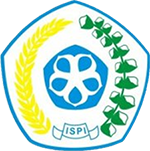Peningkatan Hasil dan Kegiatan Belajar Siswa melalui Mix Model Problem-Based Learning dan Numbered Heads Together
DOI:
https://doi.org/10.23917/jptp.v1i1.976Keywords:
Learning Activities, Learning Outcomes, Problem Based Learning, Numbered Heads TogetherAbstract
The purpose of this Class Action Research is to increase learning activities and learning outcomes of student adjustment journal X AKL B SMKN 3 Sukoharjo Semester 2 of The 2019/2020 Study Year. The method used is class action research with 2 cycles. The subject of his research was the application of a combination of the Problem Based Learning (PBL) model with Number Head Together (NHT). The research object of students of class X AKL B amounted to 36 people. The study used quantitative data in the form of values, interviews, and field records. Data collection techniques by means of documentation, tests, and observations. The result of this class action research is an increase in activity and student learning outcomes compiling an adjustment journal in students of class X AKL B SMK Negeri 3 Sukoharjo Semester 2 of The Year of Study 2019/2020 judging by the increasing percentage of learning outcomes from cycle I by 63.89% to 86.11% in cycle II. The increase in student learning activity increased from 13.35% in cycle I to 17.69% in cycle II. The conclusion of this research is the application of a combination of the PBL learning model with NHT can increase learning activities and learning outcomes of the journal of adjustment of students of class X AKL B SMK Negeri 3 Sukoharjo Semester 2 of The 2019/2020 School Year.
Downloads
References
Akbar, S. (2013). Instrumen Perangkat Pembelajaran. Bandung: Remaja Rosdakya
Arikunto, S. (2010). Penelitian Tindakan Kelas. Jakarta: Bumi Aksara.
Arnyana, I. B. P. (2006). Pengaruh Penerapan Strategi Pembelajaran Inovatif pada pelajaran biologi terhadap kemampuan berpikir kreatif siswa SMA. Jurnal Pendidikan dan Pengajaran IKIP Negeri Singaraja, 3(6), 496-515.
Bloom, Benjamin S., etc. (1956). Taxonomy of Educational Objectives: The Classification of Educational Goals, Handbook I Cognitive Domain. New York: Longmans, Green and Co.
Dimyati, & Mudjiono. (2006). Belajar dan Pembelajaran. Bandung: Alfabeta. Diperoleh dari www.wawasan-edukasi.web.id/2017/06/pengertian-dan-definisi-hasil-belajar.html.
Eviani, Utami, S. & Sabri, T. (2014). Pengaruh Model Pembelajaran Berbasis Masalah Terhadap Kemampuan Literasi Sains IPA Kelas V SD. Jurnal Pendidikan dan Pembelajaran, 3(7), 1-13 .
Hamalik, O. (2007). Proses Belajar Mengajar. Jakarta: Bumi Aksara.
Harum, I.W. & Puspasari, D. (2021). Analisis Penggunaan Model Pembelajaran Numbered Head Together pada Mata Pelajaran Otomayisasi Tata Kelola Kepegawaian di SMKN 1 Lamongan. Jurnal Sains Sosio Humaniora, 5(1), 522-532.
Hidayah, I. N., Sudiyanto, & Muhtar. (2019). Penerapan Model Problem Basaed Learning Berbantuan Mind Mipping untuk Meningkatkan Kemampuan Berpikir Kritis Pada Pembelajaran Akuntansi. Tata Arta: Jurnal Pendidikan Akuntansi, 5(3), 12-22.
Kagan. (2000). Cooperative Learning Structure. Numbered Heads Together. Diperoleh dari http://Alt.Red/clnerwork/numbered.html.
Kpolovic, P. J., Joc, A. L., & Okoto, T. (2014). Academic Achievement Prediction: Role Of Interest in Learning and Attitude Toward School. International Journal of Humanities Social Sciences and Education, 1(11), 73-100.
Kusumaningtias, A., Zubaidah, S., & Indriwati, S. E. (2013). Pengaruh Problem Based Learning Dipadu Strategi Numbered Heads Together Terhadap Kemampuan Metakognitif, Berpikir Kritis, Dan Kognitif Biologi. Jurnal Penelitian Kependidikan, 23(1), 33-47.
Mulyasa, E. (2013). Pengembangan dan Implementasi Kurikulum 2013. Bandung: Remaja Rosdakarya.
O’Farrell, C., & Lahiff, A. 2014. Writing Learning Outcomes: A Guide for Academics. Dublin: Trinity College Dublin.
Rahmah, N. (2012). Psikologi Pendidikan. Yogyakarta: Teras.
Rangkuti, A. N. (2014). Konstruktivisme dan Pembelajaran Matematika. Jurnal Darul Ilmi, 2(2), 61-76.
Sardiman. (2011). Interaksi dan Motivasi Belajar Mengajar. Jakarta: Rajawali.
Setyorini, U., Sukiswo, S. E., & Subali, B. (2011). Penerapan Model Problem Based Learning Untuk Meningkatkan Kemampuan Berpikir Kritis Siswa SMP. Jurnal Pendidikan Fisika Indonesia, 7(1), 52-56.
Slameto. 2010. Belajar dan Faktor-Faktor Yang Mempengaruhi. Jakarta: PT. Rineka Cipta.
Solikhina, F., Sarib, W., I., & Dewi, K. (2021). The Application of Numbered Heads Together (NHT) in Online Learning. IJCER. doi: 10.20885/ijcer.vol5.iss2.art6
Suprantiknya, A. (2012). Penilaian Hasil Belajar dengan Teknik Notes. Yogyakarta: Universitas Sanata Darma.
Susanto, A (2013). Teori Belajar dan Pembelajaran di Sekolah Dasar. Jakarta: PT. Kharisma Putra Utama
Sutopo. (2006). Metodologi Penelitian Kualitatif. Surakarta: UNS.
Wawasan Edukasi. (2017). Pengertian dan Definisi Hasil Belajar Menurut Para Ahli.
Zuhdi, A. (2010). Guru Idola. Yogyakarta: Gen-K Publisher.
Downloads
Submitted
Published
Issue
Section
License
Copyright (c) 2022 Jurnal Penelitian Tindakan Pendidikan

This work is licensed under a Creative Commons Attribution 4.0 International License.







